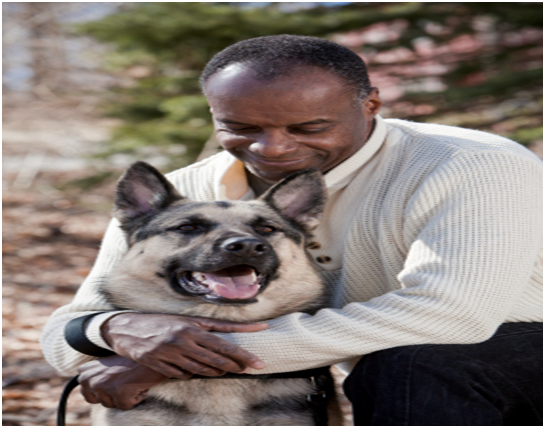How Dogs Became Man’s Best Friend
It’s a common saying and one that’s undoubtedly true. Dogs are man’s best and oldest friend among all the animal kingdom. It is common historical knowledge that dogs were the first animals to be domesticated, it is not certain how long ago this took place and where in the world it all began.
Our ancestors made dogs our companions not once, but twice. Two completely separate populations of wolves were domesticated, one in Europe and the other, thousands of miles away in Asia. Scientists have concluded this fact after using genetics to unravel the secrets of canine evolution. There are vast differences between dogs from each side of the Eurasian divide.

Humans and dogs have been buddies for a long, long time. We know that we were co-habiting as least 15,000 years ago before we introduced cows, pigs and goats into our lives. How this relationship started and why remains a mystery. If you need to go away for whatever reason, treat your closest friend to a home-from-home environment with Dog Day Care Surrey.
DNA evidence has shown that our beloved canine companions all descend from a species of grey wolves that has since become extinct. It is thought that these clever wolves decided that life with early hunter-gatherer humans was easier and more fruitful than trying to go it alone. IT was easier to scavenge from the humans than hunt on their own.
It could be that humans began caring for wolf pups, which would have led to early socializing from infancy. Wolves are pack animals with a clearly defined hierarchy and it seems that humans became the equivalent of the alpha wolf in the pack. This could explain their loyalty and willingness to obey.

There was mutual benefit in this relationship. Man and wolf became the perfect hunting duo. The skill and weapons of the humans combined with the lightning speed and incredible sense of smell of the wolf. Both would have fed well after tracking, capturing and ingesting their day’s prey. For the wolf, humans provided a steady and reliable source of food. For humans, the wolf was a helping hand, a source of warmth and an early warning system for approaching danger.
This relationship continued throughout history, with the dogs evolving to become ever more obedient friends until they were completely domesticated, and the grey wolf ancestry died out completely.
We can still see signs of the wolf ancestry in our pets today. The instincts and traits that dogs retain from their ancestors include:
The ability to rely on their senses to interpret the world.
The instinct to guard and protect their master’s property.
The urge to defend their own territory.
The ability to scavenge when food is not available.
If given the opportunity, they will dig and bury bones.
The signs of evolution are also clear though, so here are how dogs differ from their wolf forbears:
They are genetically very close, but dogs have a much more domed forehead than a wolf.
Dogs have smaller teeth, paws, skull and brain than their ancestors.
Dogs now have tails that curl upwards usually, unlike a wolf’s tail.
Enjoy being given a task to undertake, such as assistance work and livestock herding.


